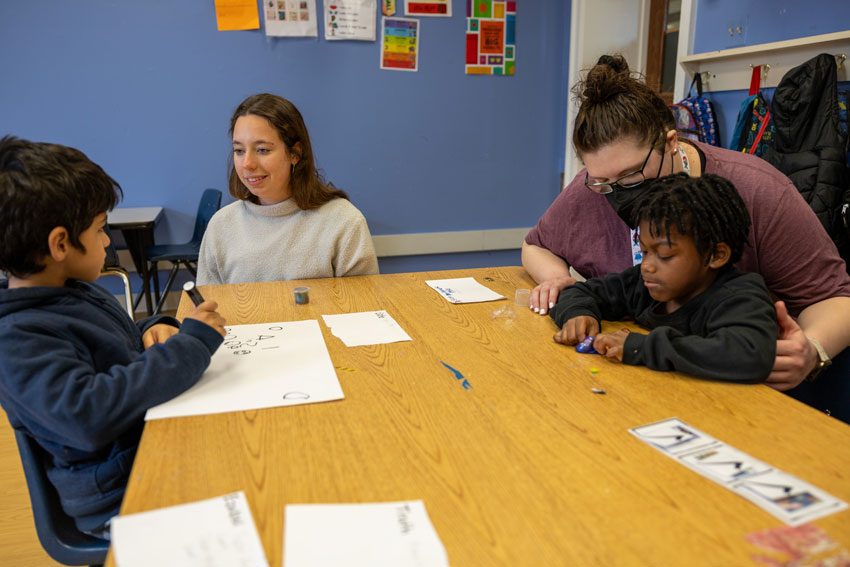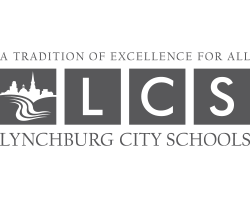For years, school divisions across the country have used in-school detention and out-of-school suspension as go-to discipline measures for students who repeatedly struggle with their behavior. As our collective societal understanding of trauma and socioemotional development has deepened, however, the need for more holistic and personalized approaches has become apparent. A new program at Lynchburg City Schools (LCS) is pioneering new ways to support students with recurring behavior challenges.
The Elementary Restorative Academy (RA) launched this school year to help students transitioning into kindergarten and first grade who need specialized behavioral support. The program helps students develop the social and emotional skills necessary for success. Students work with teachers, instructional assistants, behavior specialists, and mental health professionals for up to eighteen weeks before transitioning to their base schools. The duration of each student’s time at the Elementary RA is flexible depending on their specific needs.
“During my time as a school principal, I was seeing kids—both elementary & secondary—get suspended repeatedly. It started weighing on me heavily,” said Elementary RA Coordinator Kim Scott, who served as a principal in a neighboring school division for 15 years. “I was always drawn to the kids who didn’t fit the mold in a so-called ‘regular’ classroom. The LCS Restore program was exactly what I’ve been advocating for over the years.”
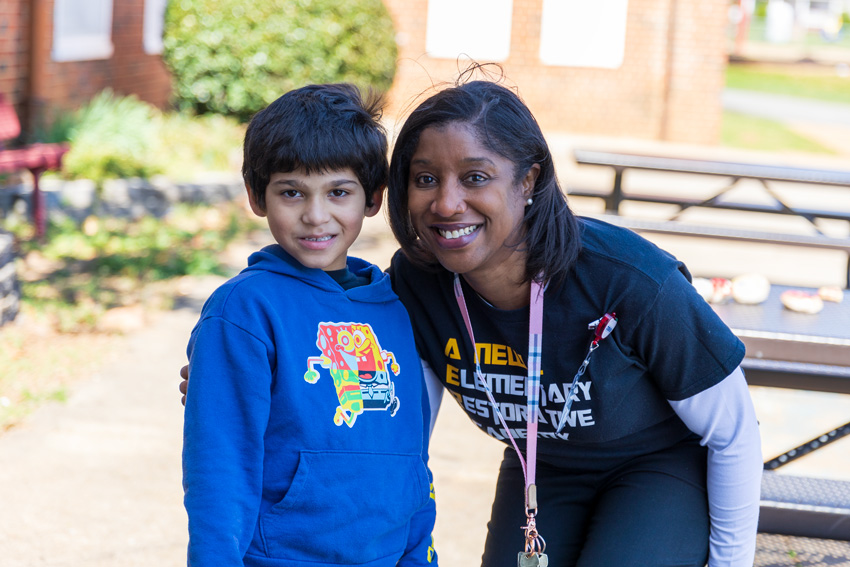
Elementary RA Coordinator Kim Scott with a student.
Under Scott’s leadership, the Elementary RA’s pilot run has been a groundbreaking success. The program’s trauma-informed, child-centered approach to student development makes it unlike anything else offered in the region. By implementing intensive behavior interventions early, the program sets students up for future success.
“Many of these students might otherwise drop out of school down the line. We’re starting early to make sure they don’t fall through the cracks,” Scott said.
Addressing Behavior at its Roots
Traditional behavior interventions can be ineffective for students who have past trauma, difficult home lives, or unique needs. For these children, disruptive behavior can be an attempt to communicate overwhelming emotions. The transition to kindergarten or first grade can be an especially difficult time for these students, as the change in routine can cause distress.
“I do truly believe that all behavior is communication. When students are behaving a certain way, they’re trying to tell us something. Sometimes, they’re trying to communicate a need. Sometimes, they’re trying to communicate a trauma,” said LCS Chief Academic and Student Services Officer Derrick Brown. “And it’s up to us as adults to really dive into that and provide students with the opportunity to heal from those things and give them some replacement behaviors and skills so that they can be successful.”
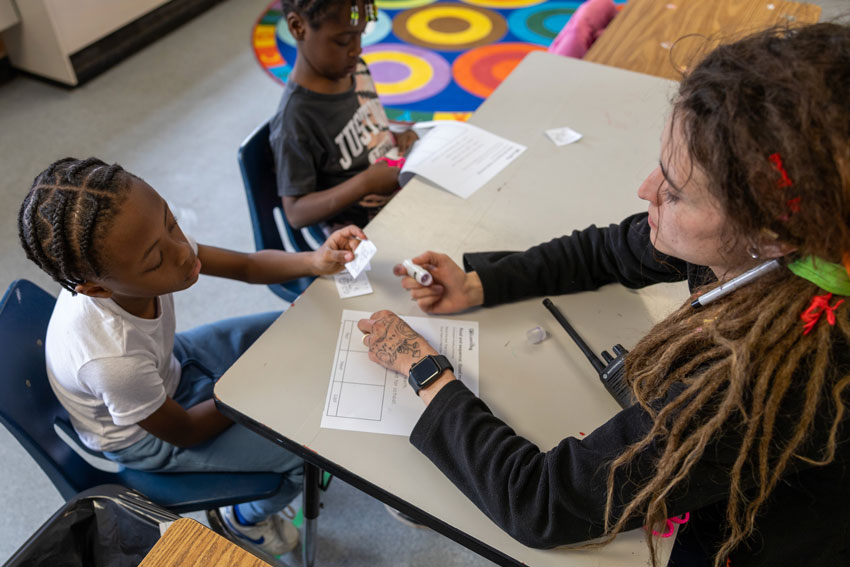
Scott and the Elementary RA team collaborate with parents; base school teachers, staff, and administrators; and relevant mental health professionals to pinpoint each student’s specific challenges and identify their root causes. From there, they formulate behavior plans and meet regularly to discuss what’s working and what needs to be changed. The team’s approach adapts to meet the needs of each child, and small class sizes prioritize flexibility.
Elementary RA staff members teach students healthy ways to communicate how they’re feeling, regulate their emotions, and interact with peers and adults alike. They work to transform behavior by helping students process and heal from trauma.
“They get to the root of the issue. It’s not just that these kids don’t know how to behave. The staff understand childhood trauma. They’re aware of what kids have been through, and they avoid known triggers in the classroom,” said Elementary RA parent Skyla Stearn.


Elementary RA students learn in a small-group classroom setting while developing socioemotional skills.
Restoring Relationships
The Elementary RA is guided by restorative behavior practices, which help students reflect on their behavior and work to restore the relationships their actions have impacted. A shift from traditional behavior interventions, which can be more punitive, restorative approaches emphasize accountability, empathy, and eventual reintegration into the classroom setting.
“Restorative practices are about meeting kids where they’re at and being able to step back and see the big picture. We’re helping students develop holistically, preparing them not just for the classroom, but for life,” said Impact Living Services behavior support specialist Laena Gaughan.
The program integrates mental health professionals like Gaughan, a community health counselor who works with Elementary RA students daily. They instill therapeutic practices into students’ days, building relationships with them and inviting honest conversations about the underlying causes of behavior challenges. The program is transitioning to include structured sit-down therapy sessions that will employ diverse forms of treatment depending on student needs.
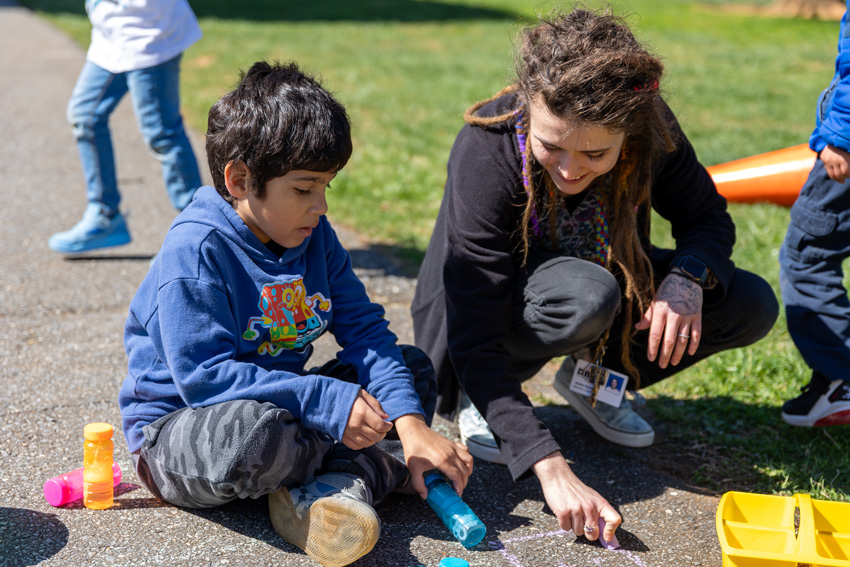
Behavior coach Amber Sandifer with a student.
Making Space for Growth
When students transition out of the Elementary RA, they leave healthier versions of themselves. The program isn’t just about helping students stay out of trouble—it’s about holistic growth and development.
“We need to be meeting kids where they’re at—to teach them, shape them, and mold them, but also to give them a space for individuality and personal growth,” said Elementary RA behavior coach Amber Sandifer.
Sandifer says she’s seen Elementary RA students go from guarded and uncomfortable to happy and verbal as the weeks go by. She and her teammates attribute the change to the supportive relationships formed between staff members and students. When students feel understood, their sense of psychological safety increases.
“Our students understand we will love them unconditionally, even if consequences may be rendered. That’s huge. That understanding is what makes this environment so positive, warm, and inviting,” Scott said.
Scott says this culture of support hinges on listening to student perspectives. She and her team maintain high expectations, but they’re committed to hearing students out and considering the big-picture factors impacting their behavior.
“They deserve to have a fair shot. We tell them, ‘you have the right to tell your side of the story. You have a voice.’ We open the door to build trust from the beginning,” Scott said. “You can’t underestimate them just because they’re five or six. These kids are amazing beyond their years.”
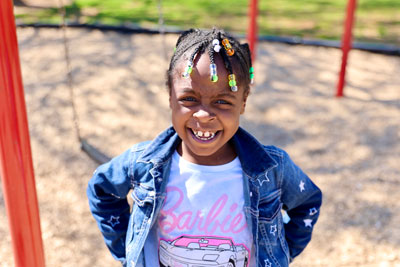
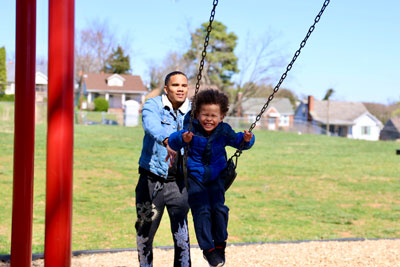
Parents as Partners
One of Scott’s top priorities is building relationships with parents and guardians, who are integral to student success. She views restorative behavior transformation as a joint effort between schools and parents.
“Our role is to be an advocate for parents, as well. We’re working with them, not against them. Parents let their guards down when they know they can count on you to look out for the best interests of their kid,” Scott said.
Scott and staff communicate daily with parents to keep them informed about what’s happening in the classroom. They integrate direct parent involvement into student behavior plans when needed, occasionally sitting down with students to call their parents during the school day.
“(Scott) has been wonderful. She always fills me in and lets me know what’s going on,” said Elementary RA parent Natarisha Ware.
Parents and guardians are an irreplaceable part of their children’s experience in the program. Scott and her team invite parents to take an active role in their growth, coming up with solutions collaboratively and returning to the drawing board together when adjustments are needed.
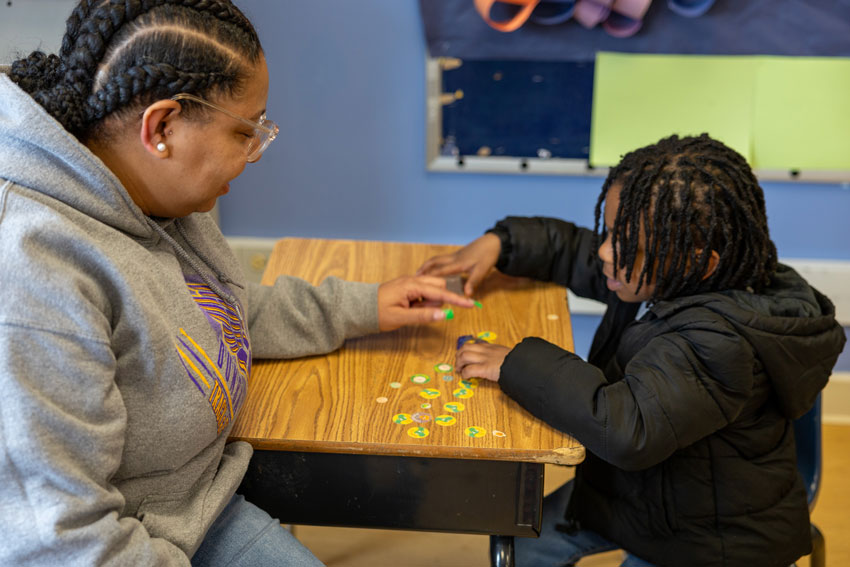
Staff members teach and model healthy communication skills.
“I’ve asked, ‘Is it okay if I come sit in the classroom with (my son) for a little bit, and maybe I can give you some insight into what’s happening with him?’ And they let me do that,” Stearn said. “They’re really good communicators. They’re open with anything that’s going on.”
Parents like Stearn provide valuable insights that can maximize the effectiveness of the program. In turn, many parents come to Scott for advice on how to support their children at home.
“Partnering with parents is everything. Their transparency with us helps us understand the factors that are affecting their child’s behavior. Some have even asked us how they can change their approach at home to better support their child by integrating what they’re learning here,” Scott said.
Transitioning Thoughtfully
Scott and her team work closely with the child’s base school teachers, instructional assistants, and administrators throughout the entirety of the program, discussing ways to support the student upon their return. When staff members and parents determine a student is ready, they begin the transition to their base school.
“A teacher at a base school could have great classroom management skills, but some kids need a little something extra. We work together with staff from the students’ base schools to give both kids and staff members the skills they need to ensure a successful transition,” Scott said.
Registered behavior technicians accompany students at their base schools for two weeks after they return. They provide support and stability through the change of environment, empowering students to be independent.
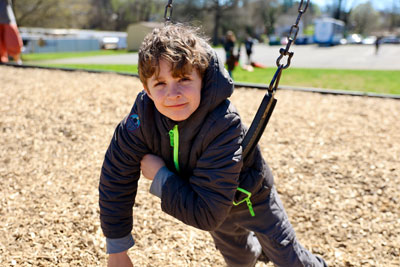

The Elementary RA gives students a toolkit of self-regulation strategies they’ll continue to develop throughout their lives.
Elementary RA students carry their newfound communication and emotional regulation skills with them to their base schools. This helps them succeed academically while reducing distractions for other students.
The road to transition has ups and downs, but many parents start noticing the impact of Elementary RA interventions long before their time in the program is up. Skills and techniques learned in the classroom follow students home.
“Recently, I’ve noticed my son has been expressing how he’s feeling in a different way to me at home. If he’s frustrated, he’ll say, ‘I’m frustrated right now,’” Stearn said. “At (the Elementary RA), they’ve been able to deescalate him and calm him down when he’s upset. Months ago, that wasn’t feasible.”
Innovating Restorative Practices
The Elementary RA is part of LCS Restore, a multi-pronged program launched in the 2022-23 school year that empowers students across the division to succeed academically and emotionally through restorative practices. Its middle and high school counterpart, the Secondary Restorative Academy, serves students transitioning into sixth and ninth grade.
For short-term secondary interventions, LCS opened the Restorative Suspension Center in February. This alternative to traditional suspension helps secondary students keep up academically when suspended instead of missing school, preventing chronic absenteeism.
In conjunction with the program’s efforts to empower base school staff to support students, LCS Restore gives students a chance to take a step back and turn their behavior around with the focused support of qualified professionals. These innovative strategies will lead the way for other divisions for years to come.
